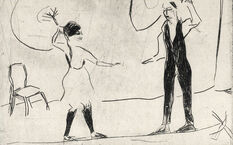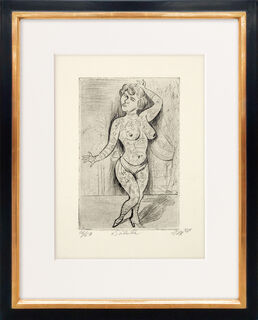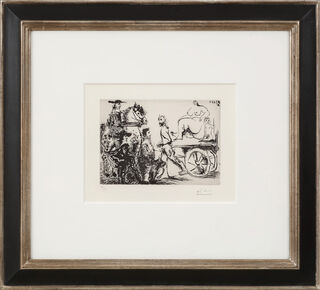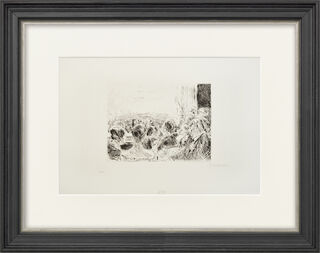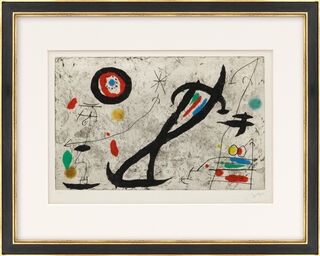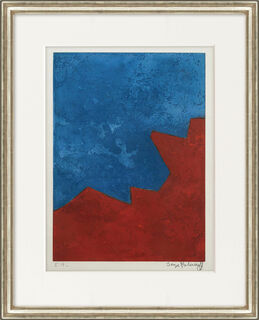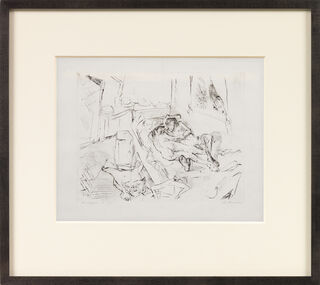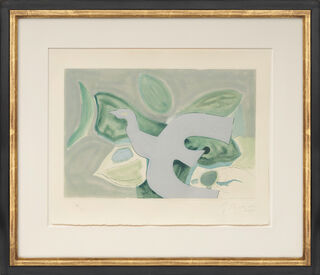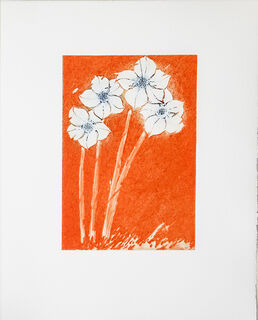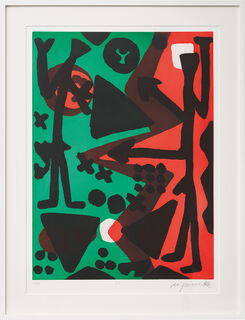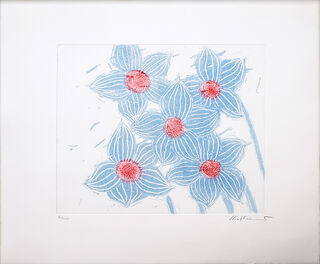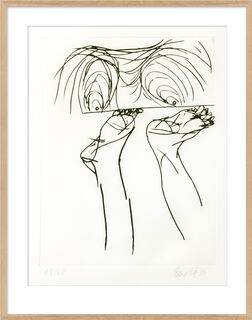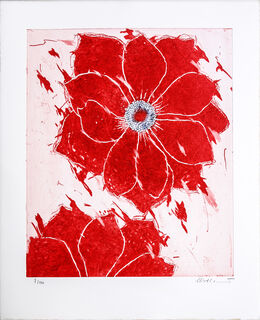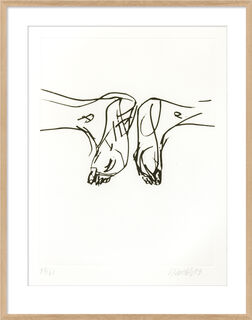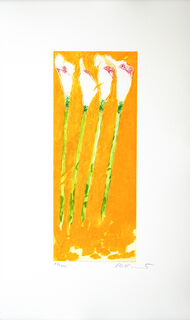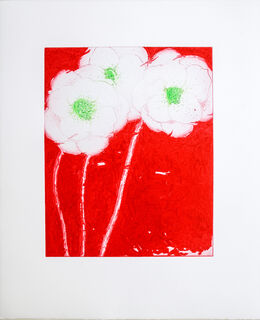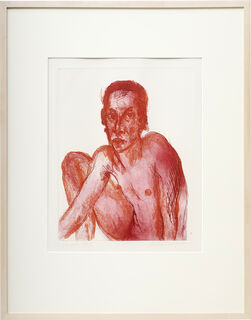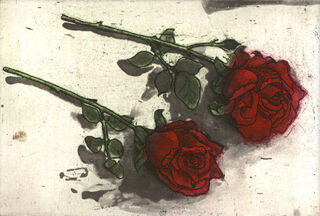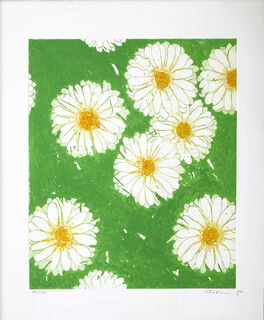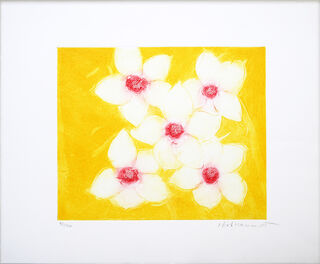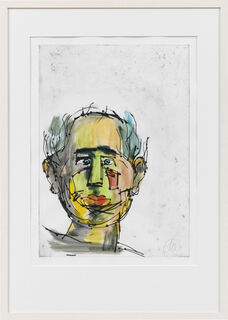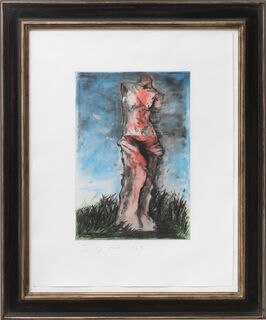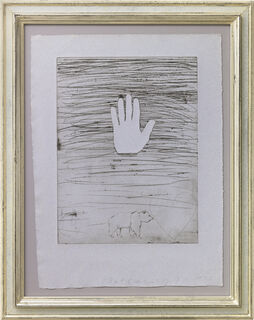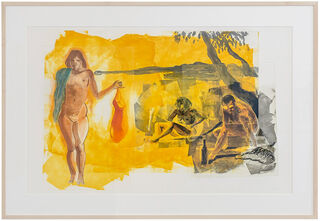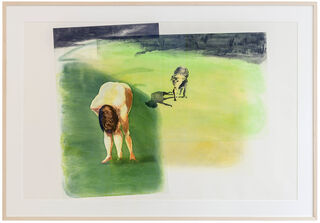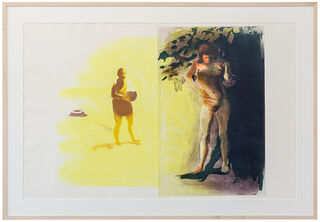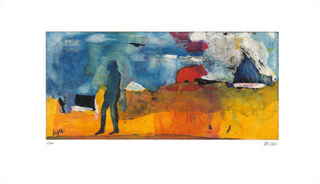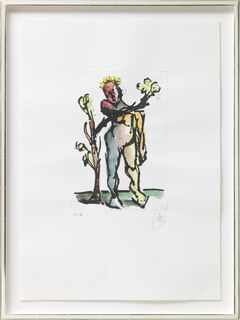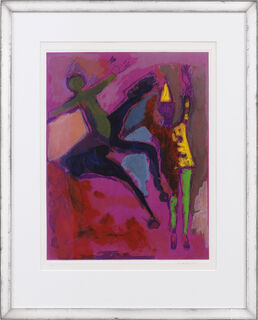Etchings
In this intaglio printing process, a polished metal plate is first coated with acid-resistant ground into which the artist carves the image laterally using an etching needle. The plate is then placed in an acid that deepens the exposed areas. After cleaning the plate, ink is applied in such a way that it adheres to the recessed areas. When printing with a special press, the plate presses the moistened paper firmly into the recesses. The motif appears on the paper on the correct side.
A basic distinction is made between drypoint etching, in which the drawing is executed on the printing plate with the etching needle, which is made of the hardest steel, without using an acid solution, and acid etching, where the drawing is scratched into a relatively soft covering layer applied to the plate. Then, the plate is etched, with the acid only attacking the areas where the covering layer was scratched.
Since this technique replaces the use of physical force with the targeted action of acid on metal, there is a greater range of artistic possibilities than in relief printing techniques such as woodcutting. This is why artists such as Pablo Picasso, Marc Chagall, Salvador Dalí, Joan Miró, Käthe Kollwitz, Emil Schumacher, and Horst Janssen appreciated and created wonderful works using this technique.

